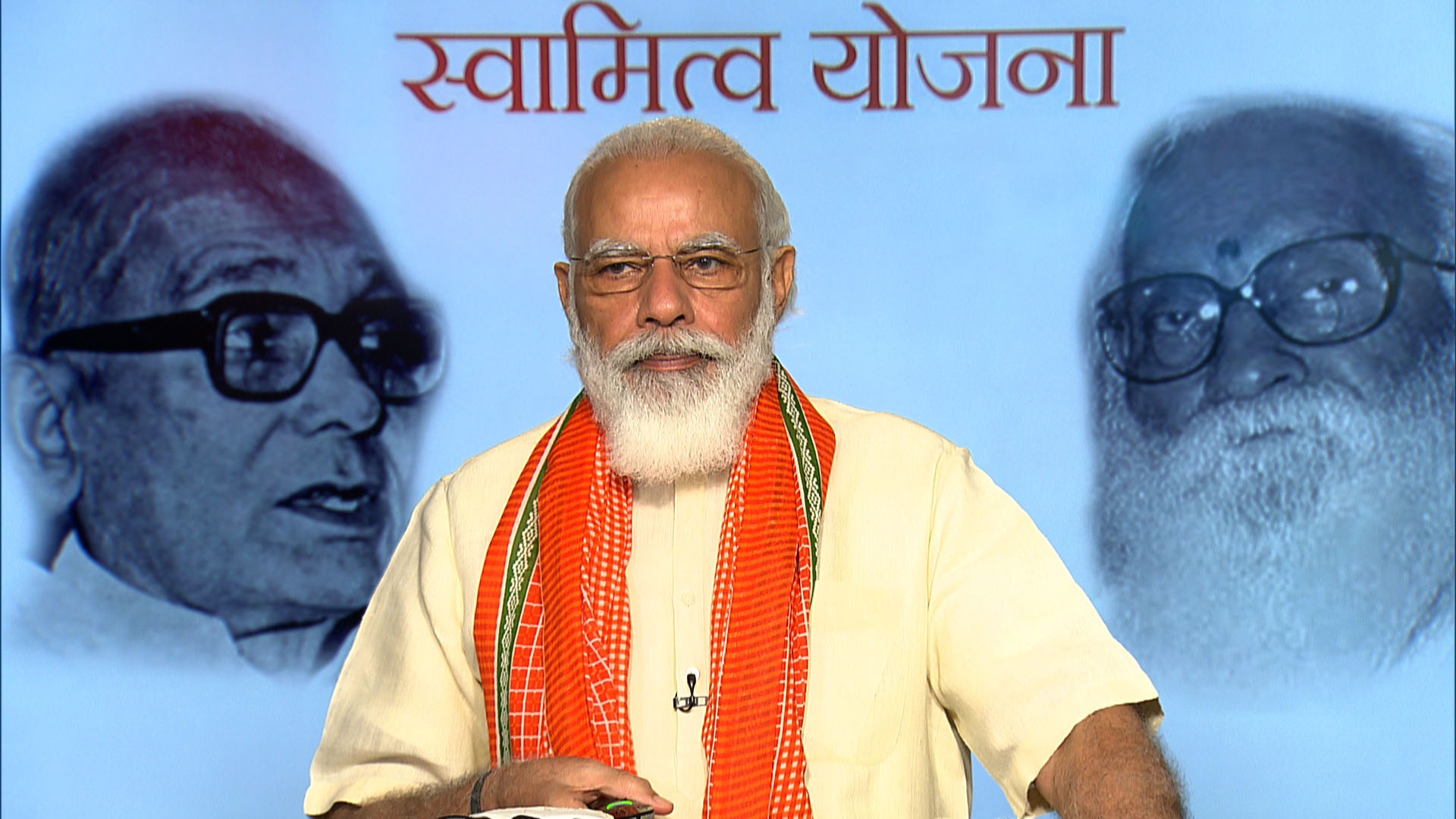The Telangana government can emulate Svamitva’s salient features and make its survey foolproof.
Prime Minister Narendra Modi launched a comprehensive land records survey “Svamitva,” an acronym for “Survey of Villages and Mapping with Improvised Technology in Village Areas”, on 11 October and it will be run for a few years. “Svamitva”, meaning ownership, will improve the quality of assets, including agricultural lands in rural areas.
Incidentally, the TRS government in Telangana, too, has launched an assets survey in rural and urban areas for the last two months and the enumeration ended by 31 October. The details collected by the survey are to be updated on a recently launched “Dharani” portal. The government’s intentions were good, but the conduct of the survey has drawn a lot of criticism from different sections of people.
Finally, the issue has landed in the High Court which is hearing a batch of writ petitions challenging the survey on many aspects, right from its legal validity to the authenticity of the portal and the privacy concerns of people, once the details are placed on the portal etc. Moreover, the survey was incomplete with 25% of people still being uncovered.
The Telangana government’s survey has created so much panic among people that many of them had rushed to their villages to upload their houses, flats and other assets on the website which crashed most times, unable to cope with the traffic. There were also rumours that unrecorded assets would be taken away by the government and that people would lose their ownership.
The acrimonious debates and arguments within and outside the courtrooms point to the half-baked nature of the survey, compared to the guarded approach adopted by the Centre with regard to “Svamitva”. PM Modi has announced his plans to roll out “Svamitva” on 24 April, on Panchayat Raj day and told the nation that the survey would be comprehensive and calibrated.
The PM underscored the need for a nationwide survey of assets and lands in rural areas in view of the difficulties faced by the officials while enumerating the loss of property during the cyclone, especially in Bengal and elsewhere as well as the woes of farmers in obtaining loans from banks against their houses and empty courtyards. These assets are valuable yet without proper records.
Most of the properties, particularly lands, vacant spaces and houses etc in villages don’t have proper boundaries and documentary records so that their owners can claim rights and take loans from banks, just as they do on their recorded agricultural lands or gold ornaments. There are also disputes and prolonged litigation among rural folks over these unrecorded assets, threatening their livelihoods.
The Economic Survey of 2018 which was tabled in Parliament stated that only 19% of the total properties in rural areas are recorded and submitted for property tax collections. That means, as much as 815 of houses, vacant lands and other assets are unrecorded and thus kept out of the purview of property tax.
Though “Svamitva” is not meant to improve property tax collections, it would definitely help record all assets in villages for a better understanding of the situation. “Svamitva” lays emphasis on usage of technology for enumeration of assets in villages and latest tools like GPS (global position system) would be utilised for the purpose of their enumeration.
One plus point of “Svamitva” is that it is based on community involvement. Local people would be informed and involved in enumeration of assets of a particular village and no unilateral decision would be taken without consulting the actual owners of such properties. Gram Panchayats would be fully taken into confidence so that there won’t be any panic among the public. As there is enough time to record all the assets, there is no mad rush among villages to upload their details. The Centre has launched some pilot projects in some states like Haryana and Maharashtra for its scheme. On 11 October, the PM launched physical distribution of “Svamitva” cards to around 1,000 villagers, obviously without any title disputes.
The Telangana government, too, can emulate Svamitva’s salient features and make its survey foolproof. First, the Dharani portal can be upgraded technologically so that there won’t be glitches. Proper technical tools should be in place to sort out difficulties in case there are spelling mistakes or name differences in the records.
More than anything else, there shall not be any deadline to enumerate the assets so that people can freely upload their details unhurriedly like in the case of “Svamitva”, which is likely go on for at least five years. The intention of governments to record rural and urban properties may be good, but their execution should be smooth and transparent.

